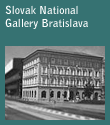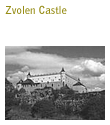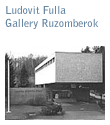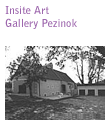
 |
 |
 |
 |
 |
|



2010
2009
2008
2007
2006
Slovak Myth
30. September 2005 - 28. February 2006
Mary of Hungary
2. February 2006 - 30. April 2006
Vladimír Havrilla
23. Marec 2006 - 4. June 2006
Artworks from the Collection of the Museum of Modern Art of Saint - Étienne Métropole
7. April 2006 - 28. May 2006
Andy Warhol – the Last Return of the King of Pop Art So Far
17. May 2006 - 15. June 2006
Figures and Episodes from the Old Testament
From Dürer to Chagall
25. May 2006 - 20. August 2006
Autopoesis
20. June 2006 - 3. September 2006
Ukiyo-e
Japanese Colour Woodblock Prints
7. September 2006 - 5. November 2006
Jindřich Štreit. Photography 1965–2005
Calendars for Jindra Štreit
20. September 2006 - 12. November 2006
Something Happened – Aspects of New Narratives
27. September 2006 - 26. November 2006
Aleš Votava
1. December 2006 - 25. February 2007
Flying Dutchmen
14. December 2006 - 18. Marec 2007
2005
2004
|
Honorary Mention Insita 2010 - Egidio Cuniberti INSITA 2010 9th International Triennial of Self-Taught Art He was born in 1928 in Mondove. He died in 2006. In his youthhe worked in a foundry. At the age of 24 he had a serious ac¬cident and underwent two serious brain surgeries in one day. He survived but other serious health problems arose: migraine, epileptic fitsandinsomniaaccompaniedhimthroughouthislife. After years of inactivity, at the age of 43 he began to create objects and furniture in an original style, using only recycled materials and working at home without electrical equipment. Then he began to live in a dimension of his own, focused on artistic work day and night, dividing it among philosophical thoughts, political, mystical and manual work. He worked in¬tensively until 2002, producing more than 200 works. Egidio Cuniberti’s totems and furniture are masterpieces, ‘raw diamonds’ that one rarely comes across. The materials are res¬tricted to ice-cream sticks and fruit cake cornets, but the result is fantastic: the female shapes are built out of any anatomi¬cal design, the faces and bodies are stereotyped. The furniture works perfectly: drawers, doors, flapsarecreatedbyamani¬acal respect for the handmade rules. The decorative necessity makes the author insert many ‘surreal’ images: one can reco¬gnise them even if they are totally strange, in fact they come from the classical inventory of the History of Art: winged hor¬ses, Marat in the bath, Roman and French landscapes, triumph of fruit, nymphs, etc. All these typical subjects are executed in a sort of impressionist technique, putting one ice-cream stick next to the other: the result is a series of vibrating and exciting images that make the furniture look baroque, solid and won¬derful. The richness of the decoration is in contrast with poor materials, often recovered from rubbish; his house was a real storage of different found objects. His fantasy switched on by the aesthetic qualities of the salvaged, rather than followed a rational project. up |
|


© 2005 Slovak National Gallery. All Rights Reserved. Web satori.































